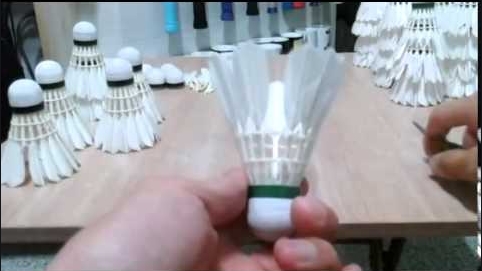How much money do you spend on ShuttleCocks? I guess if you play a lot then it soon adds up. Have you ever tried to repair them? Just get some basic tools as shown in the video on this website and start saving money.
A “ShuttleCock” is also known as a “birdie” in badminton; it is the piece of equipment badminton players hit with a raquet over the net. There are two types of badminton shuttlecocks: those made from man-made materials (like plastic or nylon) and those made from all natural materials (like goose or duck feathers). Whatever the type, the standard shuttlecock for badminton has 16 “feathers,” which are the spoke-like spindles that radiate out from the tip.
When one of these feathers is broken, it can however be fixed.
Step One
Stop play immediately once you realize a feather on the shuttlecock has broken.
Step Two
Remove the broken feather using a small pair of pliers, firmly gripping the damaged feather and gently tugging until the feather comes loose.
Step Three
Dispose of the old feather.
Step Four
Check to see if your replacement feather will fit into the hole left behind by the damaged feather. Using a replacement feather from the same brand/style of shuttlecock will give you the best chance of having a secure fit without taking any other steps.
Step Five
Expand the size of the hole using an awl, if necessary.
Step Six
Compare the length of the replacement feather with the others already in the shuttlecock. If the replacement feather is longer than the rest, use the small scissors to trim it. If the feather is too short, select a longer feather as a replacement.
Step Seven
Dab a small amount of glue onto the tip of the replacement feather.
Step Eight
Slide the replacement feather into the hole. If the hole is still too snug, repeat Step 5.
Step Nine
Keep a firm grip on the replacement feather until the glue has set. Use superglue for a faster drying time.
If you have time and the shuttles are expensive you can reapir and save a lot money and do your bit for recycling.
See video on this website for a further guide.

